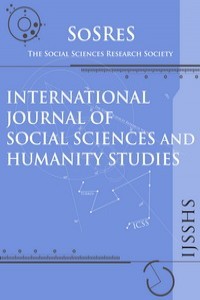THE DISABLED AND THEIR EVERYDAY LIFE EXPERINCES IN IRANIAN CULTURE
THE DISABLED AND THEIR EVERYDAY LIFE EXPERINCES IN IRANIAN CULTURE
Like the disabled in other cultures, Iranian disabled confront numerous difficulties in their everyday life. They are constantly rejected in different fields of social life by Iranian culture, and as a result Iranian disabled find themselves in an inappropriate cultural /social circumstance. This research is focused on Iranian disabled and host culture in one of northern Iranian provinces, Gilan (Rasht city) to explain living experiences of Iranian disabled as abandoned individuals in Iranian culture. This research’s theoretical approach is Erving Goffman’s “Stigma” theory applied on eight disables. Samples included four men and four women, single and aged from 28 to 45. They were exposed to be stigmatized for their physical disabilities. In this study “Autobiography” method has been used to give samples chance of speaking about themselves and their experiences in their everyday life. The participants have been profoundly interviewed. Results demonstrated that Iranian culture has patriarchal characteristics and that is why the patriarchal culture plays a key role in defining disabled by the society and by themselves. The presence of patriarchal characteristics of host culture shows itself as impassable obstacles concerning work and marriage in host society. These obstacles are constantly constructed through media and social stigmatizing actions (labeling, joshing, gagging, fooling, piteous looking and talking) as well as objective factors (particularly physical obstacles of disabled participation in their social everyday life) which contributes to perceiving “Otherness” by Iranian disabled.
Keywords:
The disabled, Stigma Social Construction of Disability, Iranian Patriarchal Culture, Experience of Disability,
___
- Ablon, Joan (2002), “The Nature of Stigma and Medical Condition”, Epilepsy & Behavior, No. 3, pp. S2-S9.
- Dovey, Kenneth A and Joseph H Graffam (1994), The experience of disability: Social construction and imposed limitation, Geelong: Deakin University Press.
- Goffman Erving (1963), Stigma: Notes on the Management of Spoiled Identity, New York: Simon & Schuster.
- King, James Michael (2004), Dynamics of Concealed Disabilities among Students at a Major Research University in a Rural Area, Unpublished PhD Dissertation, The faculty of the Virginia Polytechnic Institute and State University, Blacksburg, Virginia.
- Kleck, Robert, Hiroshi Ono and Albert Hastorf (1966), “The effects of physical deviance upon face-to-face interaction”, Human Relations, No.19, pp. 425-436.
- Lawrence, Bryan (1991), “Self-concept formation and physical handicap: Some educational implication for integration”, Disability, Handicap and Society, Vol. 6, No. 2, pp. 139–146.
- Phemister, Andrew A and Nancy M Crewe (2004), “Objective Self-Awareness and Stigma: Implications for Persons with Visible Disabilities”, Journal of Rehabilitation, Vol. 70, No. 2, pp. 33-37. Stone, Sharon Dale (1995), “The myth of bodily perfection”, Disability and Society, Vol. 10, No. 4, pp. 413–424.
- Susman, Joan (1994), “Disability, Stigma and Deviance”, Social Science and Medicine, Vol. 38, No.1, pp. 15-22.
- Thomson, Rosemarie Garland (1997), Extraordinary Bodies: Figuring Physical Disability in American Culture and Literature, New York: Columbia University Press.
- Başlangıç: 2009
- Yayıncı: Sosyal Bilimler Araştırmaları Derneği
Sayıdaki Diğer Makaleler
TURKISH POLITICAL PARTIES AND TURKISH NATIONALISM
Joss STEİNKE, Christopher OSİANDER
Nuray MERCAN, Emine OYUR, Ayşenur ALTINAY, Yaşar AKSANYAR
PERCEPTION OF INTERSECTORAL PARTNERSHIPS BY INDIVIDUAL MEMBERS (THE CASE OF LOCAL ACTION GROUPS)
Agnieszka Pawlowska, Anna Gasior-Niemiec, Anna Kolomycew
COMMUNICATION AS A FORM OF PLURALISM
ANALYSIS ON EUROPEAN FUTURE OF MACEDONIA: THE GREEK OBSTACLES ON THE NAME ISSUE
THE POST 9/11 DEMOCRATIZATION IN AFGHANISTAN: CHALLENGES AND EXPECTATIONS
